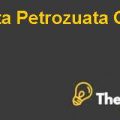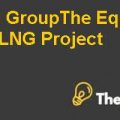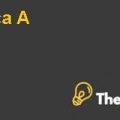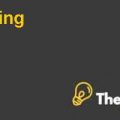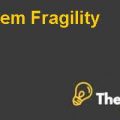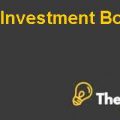
QUESTION # 01: What is the effect of adding $ 1 billion of debt (with 10 years maturity) to the ratios as in Exhibit 8?
ANSWER # 01:
Debt Financing:
When the company issues debt instruments that is treasury bond (T-Bills), notes payable, bill payable and any other kinds of bond to raise its fund is considered as debt financing. Returns on debt instrument is paid as interest as compared to dividend which is paid on the stock of the company. The interest payment is a liability of the company, regardless whether the company has earned loss in any of the year. Interest payment reduces the tax payment of the company as the interest is tax deductible. Additional debts of $1 billion in the capital structure of the UST Inc. reduces the tax liability of the company by the $0.38 billion every year, assuming the average tax at a constant rate of 38 percent. Increase of the debt in the capital structure of the UST Inc. also reduces the weighted average cost of capital of UST Inc., as the reduction in the weighted average cost of capital increase the market value of the UST Inc.
EFFECTS ON FINANCIAL RATIOS:
Interest coverage ratio of UST Inc would decrease with the increase in debt of $1 billion, as the earning before interest and tax would be assumed to remain the same but the interest cost would increase as the level of debt increases. This results in the decrease in the interest coverage ratio which will decline to 10 times. UST Inc might suffer financial risk on the interest payment. As shown in Exhibit 1.
Earnings before interest, tax, depreciation and amortization (EBITDA) ratio would also reduce as the increase in debt of $1 billion in the UST Inc. earnings before interest, tax, depreciation and amortization (EBITDA) ratio decreased to 10.45 times, which is 105.6 times before the injection of $1 billion in the capital structure of UST Inc. As shown in Exhibit 1.
Fund flow to total ratio declines due to increase in the interest payment on the additional debts of $1 billion and decrease in the total fund flow of the company UST Inc. increase in interest payment and decrease in fund flow cause this ratio declines to 28.88 percent which is before the incorporation of $ 1 billion debts is 364 percent. As shown in Exhibit 1.
Free cash flow to total debt would also dramatically change with the increase in debts of $1 billion in the capital structure of the UST Inc. as the ratio declines from 296.5 percent to 28.26 percent. This decrease in the ratio is due to the increase in total debts of the company. As shown in Exhibit 1.
Return on capital ratio reduces as the increase of $1 billion debt in UST Inc, as the return is calculated by adding earnings before tax and interest expense. Return on capital would reduce to 53.60 percent, which is before the new debt of $ 1 billion is 140.6 percent. As shown in Exhibit 1.
Operating income to sales ratio will be affected by the injection of $ 1 billion debt in the capital structure of the UST Inc. as the operating income to sales ratio will not consider the interest payment as well the debt amount. Therefore the operating income to sales ratio will remain same as it is before that is 55.7 percent. As shown in Exhibit 1.
Total debt to total capital ratio would also reduce by the increase in the debts of $1 billion. The leverage position high in UST Inc. as the total equity would reduce to approx 25 percent of the total capital structure. The financial problem can also be faced by the UST Inc. with the increase in the debts. The total debt to total capital ratio would be 74.62 percent after the incorporation of $ 1 billion debts. As shown in Exhibit 1.
QUESTION # 02: What would be the implied rating of UST after having this amount (or other amounts) on the balance sheet?
ANSWER # 02:
An additional $1 billion debt in the capital structure of the UST Inc. reduces the credit rating of the company from the AAA rating to AA rating company. Rating on the basis of earnings before interest, tax, depreciation and amortization (EBITDA) of $1 billion debt decrease the credit rating of UST Inc. to AA rating. The UST Inc. rating on the basis of fund flow to total debt would be BB rating, which is before the projection of $1 billion debt in the capital structure of the company is AAA rating. The credit ratings of UST Inc. on the basis of free cash flow to total debt ratio would fall to AA................
This is just a sample partial case solution. Please place the order on the website to order your own originally done case solution.

